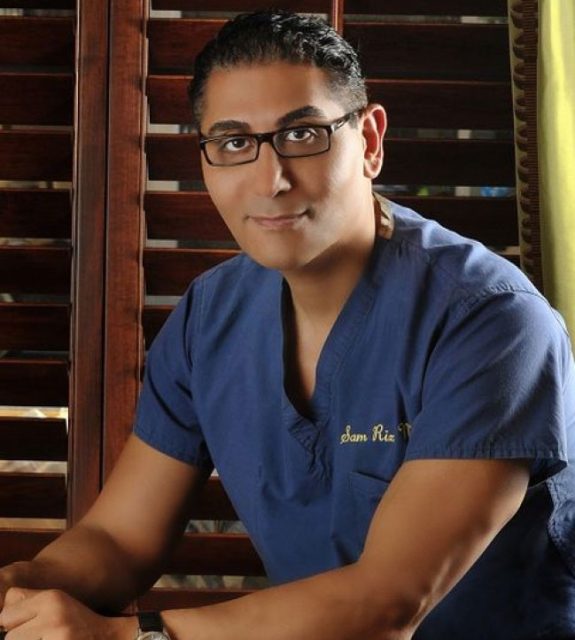Are you dreaming of a perkier, more youthful silhouette without the worry of implants? If so, a breast lift with fat transfer may be the perfect solution for you. This innovative procedure combines the artistry of a breast lift with the natural enhancement of your own body fat, resulting in a beautifully contoured figure. Not only does it improve the shape and position of your breasts, but it also provides an opportunity to sculpt stubborn areas such as the abdomen or thighs. The outcome? A flattering lift and a smoother profile, all while maintaining a natural look and feel.
 Photo Credit: Viktor Gladkov/Shutterstock
Photo Credit: Viktor Gladkov/Shutterstock
What is a Breast Lift with Fat Transfer?
A breast lift with fat transfer, also known as mastopexy with fat grafting, combines two procedures: a breast lift and fat transfer. The process begins with the removal of excess skin and tissue to lift and reshape the breasts. This is followed by harvesting fat from other areas of the body—such as the abdomen, thighs, or flanks—using liposuction. The harvested fat is then purified and injected into the breasts, enhancing their size and contour naturally. This approach aims to improve breast position, shape, and volume without the need for implants.
Key Benefits of Combining a Breast Lift with Fat Transfer
This combination procedure offers several unique advantages compared to traditional breast augmentation using implants:
- Natural Look and Feel: Since the fat used in the procedure comes from the patient’s own body, the resulting breasts tend to feel softer and more natural compared to silicone or saline implants. This is particularly appealing for those seeking subtle enhancements.
- Dual Benefit of Body Contouring: The liposuction process not only enhances the breasts but also contours the areas from which the fat is harvested. This means patients can enjoy improved body shape in addition to breast enhancement.
- Reduced Risk of Complications: With fat transfer, there are no foreign materials involved, which can minimize the risks associated with implants, such as capsular contracture (scar tissue forming around the implant), implant rupture, or the need for future replacement surgeries.
- No Need for Implant Replacement: Unlike implants, which typically require replacement every 10 to 15 years, the results of a breast lift with fat transfer are more enduring, eliminating the need for additional surgeries in many cases.
Who is an Ideal Candidate?
An ideal candidate for a breast lift with fat transfer is someone seeking a natural enhancement in breast shape, contour, and volume without the use of implants. Additionally, candidates should have sufficient donor fat available for the transfer. Those who are generally healthy and have realistic expectations about the results are also prime candidates for this procedure.
The Fat Harvesting and Transfer Process
The process of harvesting and transferring fat to the breasts involves several key steps:
- Liposuction: The first step is to perform liposuction, a minimally invasive procedure that uses a small cannula to suction fat from designated areas of the body.
- Purification: Once the fat is collected, it undergoes purification, typically through centrifugation. This process separates the fat from blood and other fluids, ensuring that only the healthiest fat cells are used for transfer.
- Injection: After purification, the fat is injected into the breasts at various depths to create a natural appearance.
- Recovery: Following the procedure, patients may experience swelling and bruising but can generally resume normal activities within a few days.
View this post on Instagram
Risks and Potential Complications
As with any surgical procedure, a breast lift with fat transfer comes with certain risks and potential complications, including:
- Fat Reabsorption: Typically, 20-40% of the transferred fat may be reabsorbed by the body within the first few months, which can lead to some loss of volume.
- Fat Necrosis: This occurs when some of the fat cells die, potentially forming firm lumps or cysts. While generally harmless, these lumps may feel unusual and sometimes need to be removed.
- Infection: Though rare, infections can occur at the harvesting or injection sites. Antibiotics are usually prescribed to minimize this risk.
- Oil Cysts: Fat breakdown may release oil that can form small fluid-filled cysts. These are usually benign but may require drainage or removal in some cases.
- Changes Due to Weight Fluctuations: Since transferred fat cells behave like any other fat in the body, significant weight changes can impact the appearance of the breasts over time.
A breast lift with fat transfer presents an appealing option for individuals seeking natural breast enhancement. With the combination of a breast lift and the use of the patient’s own fat, this procedure offers a unique blend of aesthetic improvement and body contouring while minimizing the risks associated with traditional implants.
For expert advice and safe, personalized care, reach out to Haute Beauty Ambassador Dr. Sachin Shridharani of LUXURGERY.
For more information, visit Sachin Shridharani, MD, FACS's social media:























